THE PERFECT PAIR DOLPHIN TRILOGY IS PROUD TO PUBLISH 'tHE SIGN' BY ACTIVIST LEOTIEN PARLEVLIET25/6/2021 The Works of Leotien Parlevliet
For those who don’t know me from my first blog on The Perfect Pair Dolphin Trilogy website, here’s a quick recap. I am a former French teacher and published my first novel, Eleonore, in 2007. Following a course in screenwriting, I embarked on several scripts, two of which are now finished. Being a keen environmental activist, I wished to use my work to raise public awareness about the threat to life on our planet. To this end, I wrote The Sign and Heaven’s Revolution. My work addresses social topics centred on mutual human relations … with just a touch of magic! Get the picture? Okay! Here is the plot of The Sign set in scenes. The Sign Genre: Comedy. It’s inspirational and female driven. Log line: A team of oceanographers are involved in an unprecedented marine animal protest action, which takes a sudden turn. ACT ONE: The world is in the grip of the terrible Covid-19 pandemic. On a craggy cliff in the desolate East Cape of South Africa, Mary Anne, a young female oceanographer, peers at the ocean through her video camera. She is a member of the Australian Ocean Institute who carry out research in the Indian ocean. The sudden appearance of a few pods of dolphins, followed by a number of humpback whales, surprises her, but she’s stupefied and appalled when a pod of orcas surfaces, too, as this is not the time for dolphins and other marine animals to join their enemies for a feeding frenzy on migrating sardines. Troubled, Mary Anne telephones her team-mate, Malcolm, to share her observations. Malcolm is sailing along Kwa-Zulu-Natal’s coast with his two mates, John and newcomer Mark. Malcolm, like John, is a real old hand. As he prepares for his investigation of the coral reefs, a few humpbacks swim to his boat and force him to change his plan. Mark is a handsome young man who seems to live for his job, but he has a gloomy demeanour. John, who registers the sounds of whales, has the appearance and air of a real craggy seafarer with his captain’s cap, side whiskers and weathered face. As more humpback whales speed towards the boat, threatening to encircle it, the crew attempt to make their escape. However, they are quickly surrounded within a heart-shaped formation of cetaceans and other marine life. From the vantage point of the cliff, Mary Anne watches in amusement as the intention of the marine animals becomes clear. ACT TWO: Unexpectedly, the cetaceans suddenly break formation and approach the boat to spit a plethora of plastic junk onto the deck. Malcolm and John are shocked when Mark reacts angrily, throwing the sea junk back at them. Undeterred, the cetaceans respond by again throwing it onto the deck and clicking at him loudly. This is the beginning of a change in their relationship. The marine animals suddenly fall silent and retreat to re-form their heart-shaped formation. In the distance, there is a huge ripple cutting the water – and it’s approaching the boat. The mood of the team immediately changes to one of anxiety and fear. This sinister turn of events increases the suspense of the unfolding scene. Then, it appears: an enormous white shark. Mark, consumed by panic, produces a gun, which he aims at the monstrous shape swimming just beneath the surface. Immediately, conflict consumes the team as Malcolm and John shout at their teammate to stand down. Incredibly, the great white shark mimics the cetaceans’ act by throwing rubbish onto the boat’s deck. A confused Mark again interprets these actions as hostile, so aims his gun at the shark’s head. John and Malcolm fail to recognise Mark’s fear and confusion, and the situation deteriorates further when Malcolm expresses deep disdain for Mark’s father, a trawler fisherman who gifted Mark the gun. A screaming row develops, causing Mark to drop the gun into the water next to the monstrous shark. The two men square up for a fight, but John intervenes, reproaching them for breaking Covid social distancing regulations. Meanwhile, Mary Anne, still watching from the cliff, becomes afraid for the team's safety, so tries to contact the coast guard. ACT THREE: Unexpectedly, the huge shark uses its snout to hurl Mark’s gun back onto the deck, before plunging beneath the surface. Mark stands muttering from a safe distance, whilst John attempts to justify his behaviour to Malcolm, clearly illustrating Malcolm’s stubbornness and John’s calmness. An impasse follows as the two men put their conflict behind them to watch the white shark join its fellow sea creatures in their protest action. After a chaotic rescue, the three men return to the Australian Ocean Institute headquarters, where they are joined by Mary Anne, who attempts to calm the two quarrelling men. However, her gentle approach fails, causing Mark to resign and walk out. This action leaves his teammates in utter consternation. Now one man down, they reluctantly accept the invitation of a colleague, Pete, to view a news flash on TV: a phenomenon is taking place, as world media covers what appears to be a global protest by marine animals about humankind’s disrespect towards Earth’s oceans and its citizens. Coast Guards and rescue teams all over the world suddenly find themselves embarking on missions to rescue seagoers held hostage by concerned marine life. So widespread is this event that even the space station, ISS, has sent images of the protest to NASA. As the team members watch the TV, transfixed, Mark re-enters the room. Having watched the newsreels on his tablet, he has re-thought his actions and repented. Hence, their joy is complete. CLICK THE LINKS BELOW TO WATCH THE TRAILERS! https://www.stage32.com/media/2540044231880221454?ref=search&autoplay=1 https://youtu.be/tVtILjZib6Y via @YouTube
0 Comments
The Perfect Pair Dolphin Trilogy is happy to present "heaven's revolution" by Leotien Parlevliet10/5/2021 So, who am I?
I am a former French teacher and published my first novel, Eleonore, in 2007. Following a course in screenwriting, I embarked on several scripts, two of which are now finished. Being a keen environmental activist, I wished to use my work to raise public awareness about the threat to life on our planet. To this end, I wrote The Sign and Heaven’s Revolution. My work addresses social topics centred on mutual human relations … with just a touch of magic! Get the picture? Okay! Here is the plot of Heaven’s Revolution set in scenes. Heaven’s Revolution The concept: Dolphins warn a psychic that the Cosmos can no longer handle the disruptions to its unique system caused by human activity. However, if people of all nations link hands to help nature, nature will recover and eventually restore our planet to its former self. Genre: An adventurous drama, inspirational and female-driven. It’s an environment-threatening cult that meets The Lord of the Rings. Logline: When two environmental activists attempt to save the planet, they find themselves battling a malefic cult and a Cosmos that can’t handle any further disruptions. ACT ONE: A pod of dolphins warns two oceanographers about a strange phenomenon in the sky. Next day, a dense smog envelops the world, and it becomes apparent that a life-threatening cult has seized power. A psychic named Sabina and a natural scientist named Brian appear on a TV news broadcast to tell the public about the message that Sabina received from the dolphins. They reveal the presence of an underground facility in Trenton, New Jersey; a place built by a team of research experts to facilitate refuge and conservation. Together with three other volunteers, Sabina and Brian embark on a mission to the headquarters of the destructive cult, which is based in the Ural Mountains. There, they hope to destroy the cult and save the environment. It’s their intention to throw their character-related crystals into the fire of a ritual ceremony. ACT TWO: With the cult hot on their trail, the team encounter terrifying ecological disasters, including the emission of toxic fossil fuel, mass deforestation, ferocious lightning storms and two violent round ups. These traumas change Sabina and Brian. Brian especially loses his cool when he is confronted with his almost-fatal former relationship. He’s shocked to find out that he is still in love with Cheryl, and tries to hide his true feelings behind a mask of arrogance. This causes friction amongst the team and a cooling of his friendship with Sabina. His disturbing behaviour climaxes when Cheryl is kidnapped by the cult during a fight. During this violent scuffle, Brian betrays his true feelings and loses sight of their mission. As for Sabina, she argues with another team member, the realist Harry, about her visions. Their bickering comes to blows when she reveals how a dream saw them trapped by the cult near a rocky flight of steps, with one of their teammates fading away in a bright light. Sabina’s over-confidence proves to be her biggest enemy, as she is unable to figure out the meaning of her dream. Meanwhile Pierre’s many phone calls arouse her suspicions. When they are at last on their way to their target, hostilities within the group get worse. It appears that Pierre is a traitor who leads them to the dread rocky steps foretold in Sabina’s dream. He wants to turn them all over to the cult. When Sabina attempts to save their mission by challenging Pierre to a life and death duel, Harry intervenes and blows their final chance, saddling himself with a furious Sabina. ACT THREE: Their mission appears to fail, and all hope seems lost – until an injured ceremonial pigeon intervenes. As the leader of the cult attempts to shoot the bird, their kidnapped companion slams the gun from his hands, allowing the pigeon to drop the crystals into the fire, thus eliminating the cult. The sky becomes clear as an enormous healing crystal arises from the flames. The members of the fellowship link hands; but whilst Sabina and Harry make amends, the rift between Brian and Cheryl is far more difficult to resolve. Besides, Cheryl is traumatised by her abuse and rape at the hands of the cult. Brian has to work to regain Cheryl’s trust before he can confess his true feelings for her. They return to their underground world, and attempt to restore what has been lost both in the environment’s beauty and in their own hearts. Various shots illustrate the beauty and threats to the planet, whilst a woman’s voice expresses the dolphins’ warning to humanity in a song, The Cry of The Dolphins. Lyrics for THE CRY OF THE DOLPHINS (Title Song of Heavens Revolution.) An Emerald in the Universe with huge magical forests, mountains and hills. Heavenly waterfalls, seas, and oceans. Rich coral reefs and iconic species. That liveable miracle is turning dramatically grey, as if an ashen veil is gradually being draped around its globe, which fades its lustrous green away. The dolphins’ cry is loud and clear and can no longer be ignored. Our house is burning. Thus, the stakes are high, as Paradise may be lost. There’s no time to persist in the lie. Behind their seeming smile, the dolphins cry desperately; Mother Earth is at stake. Once the forests are burning, fertile soils changed into sandy plains. The seas and oceans poisoned, most species wiped out, the bees gone, and the birds stop singing. When all these sounds die out and a dead silence falls, there’s no turning back. A copy simply can’t be made. The dolphins’ cry is loud and clear and can no longer be ignored. Our house is burning. Treasures are at stake. This cannot go on. For a copy can never be made. So, be our voice. Hope you enjoyed the read! Leotien Parlevliet https://www.stage32.com/media/ https://youtu.be/tVtILjZib6Y via @YouTube  We all know the last year has been exhausting in more ways than one, and lots of people have used nature to relax, using the outdoors as a way of letting off steam. Sadly, even after the revelations of Blue Planet and the persistent headlines telling how nature is fighting a losing battle against humankind, people still think it’s ok to have little disregard for our natural environment - and the area struggling most is the oceans. In summer of 2020 I became part of a team at my local dive site where I have been working with the resident course director Steve Ousby to bring more emphasis on conservation through Project Aware. He was already aware of my passion through a friend of mine and asked if I would be interested in linking up with them because our dive club (Hull Sub Aqua Club) was already pushing the Project Aware 'Dive against Debris'. So, we asked the question: how best could we look after our environment during these difficult times? With the ocean being our favourite place, a few of us decided to take action; take turns to keep our local beaches clean. Several members got involved, either cleaning beaches or cleaning their local environment. Thus, a start was made. North Landing is my favourite place because, for me, it has sentimental meaning. When I was young, my family and I spent a great deal of time on caravan holidays there. So, spending a few hours there collecting litter (armed with a flask!) is a great way to relax - regardless of the weather. it’s a beautiful, tranquil bay, and if you get the weather, it’s a touch of paradise. Mappleton Beach is also a nice stretch of beach, but when the tide comes in, you can’t reach it. However, visiting after the tide has retreated, you can usually bag up a plethora of litter. Much of the trash here looked like it had come from the ships and boats out at sea, the usual finds mostly being fishing ropes and wire. Did you know that roughly 46% of plastic found in the ocean consists of discarded fishing equipment? Yet, most people are totally unaware of this. Add to this plastic bottles, sweet and crisp wrappers and other nasties, and the list is endless. It's really sad to realise that most humans just don’t care. Then, there's the huge amount of litter that blows in from the surrounding inland areas.
Sadly, people still underestimate the power of the sea. We had some rough seas in January and February, spitting rubbish ashore, and in a particular part of the beach, the micro plastics had accumulated in the seaweed, the ocean angrily spitting it back out, saying: "Here - have your rubbish back!" Withernsea Beach - So, over time, walking along this large stretch of beach, we found a mish-mash of litter from plastics to fishing gear, as well as dead animals, such as squid, birds and fish. People walk along our beaches to relax, exercise their dogs and admire the beauty of the ocean scenery. But they fail to hear the ocean's roar of "HELP ME! I'M IN TROUBLE!". Only if you truly appreciate how vital the oceans are to life on Earth will you understand the need to protect them. After a lot of hard work, six beaches were cleaned in total. Again, most of our finds were fishing ropes and netting, along with the usual array of plastics. People need to remember that any animals getting trapped in netting out at sea have a slim chance of survival unless, of course, a boat comes along to free them. Plastic was our second biggest find, large and small pieces, plus the very tiny. Plastic bottles eventually break down into smaller and smaller pieces, and animals mistake them for food. Ingested plastic stays in the stomach, making animals feel full so that they stop eating and eventually starve to death. Beaches cleaned were Bridlington, Barmston, Mappleton, Fraisthorpe, Withernsea and Flamborough. Sadly, within seconds of being on these beaches, visitors will come across the evidence of human disregard. We leave our mark everywhere, still not understanding the importance of nature to us all. It make me sad and annoyed, but I know if I pursue my rubbish-collecting quest, some good will be done. Remember, it is our duty to protect and educate the next generation. As you will realize, I do it because it’s something I care deeply about. I understand nature's value and importance. People must be made to understand that we are ALL animals; all part of one big eco-system. We humans are not at the top of the tree, but are an integral part of it. We are no less and no more important than any of the other species that share our planet - something people need to understand. My advice is to keep doing your bit, share your ideas and passions, and even if it matters to you and no-one else, don’t let the doubters change your point of view. We are living in a confusing and fragile world - a world that a minority doesn’t want changed. However, the majority DOES want change, and there's the difference. I want to thank all my diving friends and family for their fantastic help and support - in particular Jakkie Dainty and Steve Ousby. We all need people to lean on sometimes. The oceans are an amazing part of our Earth: a sanctuary and a place to love - and a blessing for which we should all be truly grateful. I know I am. Thankyou for reading Nemo 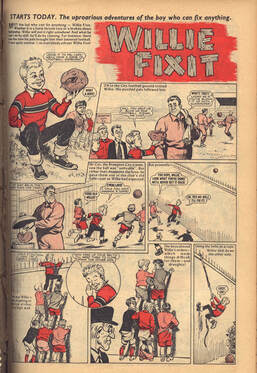 Willie Fixit 1962 - Artist Bill Holroyd. Artwork courtesy of D C Thomson & Co Ltd. Willie Fixit 1962 - Artist Bill Holroyd. Artwork courtesy of D C Thomson & Co Ltd. Article first published by Best of British Magazine in 2008 When you find yourself grinning at the wry humour of Alf Wit, Plum McDuff or Ding Dong Belle, it’s hard to imagine their creator fighting for survival on the beaches of Dunkirk. But, at 21 years of age, that’s exactly what Bill Holroyd was doing. Dodging a snowstorm of bullets and with blood pumping from a shrapnel wound in his nose, Bill struggled bravely and selflessly to get those pals more badly injured than himself aboard a vessel back to Blighty and safety. The boat almost left without him, but when a mate on board yelled that Bill might also like to return to England in one piece, a last-minute leap secured him a place with those he’d helped to save. But Salford boys are tough, and Salford boys born into large families during the early 1900s had to be particularly tough. Bill Holroyd was born on 21st March 1919, the third eldest of seven surviving children. Like all his brothers and sisters, Bill had a natural flair for art. A talented child-artist, he won a scholarship to study at Salford Art School. There, he met another talented artist, Ken Reid of Fudge the Elf and Roger the Dodger fame, who quickly became his best friend and would also become his brother-in-law. In 1937, Bill secured his first job working in the art department of an advertising agency in Manchester. But, despite having the chance to do a job he loved, Bill didn’t easily tolerate being shut up in a studio. He wanted to see the world, so joined the Royal Artillery. Unfortunately, 1939 saw the onset of the Second World War – hence Bill’s first precarious visit abroad. Following his journey back to Blighty, Bill found himself hospitalised in Liverpool - too close to Salford for temptation! He absconded from hospital in the hope of seeing his family - but an encounter with the Redcaps saw a speedy end to that adventure. In September 1941, whilst billeted on a farm in Ballysnodd, Northern Ireland, he met his future wife, Elizabeth (Betty) Girvan. Betty fondly recalls noticing Bill singing in a chorus of some twelve soldiers at a concert - wearing a cowboy hat and playing a ukulele. “He looks a nice lad,” she whispered to her friend. But a week later, she was astounded to find him sitting on her garden fence. “He asked me how old I was and I said, ‘Nineteen,’ because I thought he looked so young.” Bill couldn’t believe the coincidence – he was just nineteen, too! The fact that the happy couple started out by fibbing to each other wasn’t a bad omen, however. Their marriage took place only five months later and lasted until Bill’s death in February 2000 – just days before their 58th wedding anniversary. Betty describes a wedding day spent in and out of Police barracks trying to organise her passport to visit the Holroyd clan in Salford. After the wedding, the couple did manage to visit England briefly – but only when Bill was posted there did England finally become home. At least for a short while. Soon after being demobbed, Bill joined the Hornsey Art College in London, where he remained until starting work with Gaumont British as an animator. Although working full time to keep a wife, two young sons, Wee Bill and Holven, and a daughter, Colleen, Bill still found time to send freelance scripts off to various publishing houses. In October 1950, he landed a full-time position with the publishers D. C. Thomson and moved to Arbroath in Scotland - a town familiar to him from his army days. The family lived there until Bill bought a boat, the Duchess of Down, in which they sailed back to Ireland and a stunning home in Ballygally Bay. Tracy J Holroyd, Cert Ed, BA(Hons) - Member of the Society of Authors Author of: Children's History of Manchester Children's History of Lancashire Co-author of: The Perfect Pair: The Enchanted Mirror The Perfect Pair: The Mirror Cracks The Perfect Pair: Shards from the Mirror Belinda Fellgate: HellCat Belinda Fellgate: The Kiss of Flauros 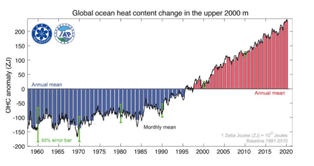 Since the 1990s the heat in the oceans has taken off as the amount of fossil fuel combustion has more than quadrupled. Image credit: Kevin Trenberth Since the 1990s the heat in the oceans has taken off as the amount of fossil fuel combustion has more than quadrupled. Image credit: Kevin Trenberth First published on January 23, 2021 in The Life Slant by Dr. Reese Halter The year 2020 set another horrible heat record in the oceans, which make up 99 percent of the planet’s biosphere, or, where life can exist. Many billions of our brethren and sistren, the animals, are already dead. It’s simply too hot. The ocean heat is in lockstep with burning fossil fuels and wood pellets. In 2020, the world’s oceans absorbed the equivalent heat to dropping 10 Hiroshima atom bombs every second of the year (20,000,000,000,000,000,000,000 {sextillion} joules). Allow me to remind you that the oceans drive Earth’s climate. Hence we are amid a worsening man-made climate crisis. It is never just about humans though. We share this glorious blue planet with a couple of million other life forms. All life is interrelated and we need everything that is left, alive. Fossil fuel and wood pellet combustion heat is stoking the man-driven Sixth Mass Extinction. The Arctic is parboiling about three times faster than the rest of the planet. Gray whales that depend upon the Arctic sea ice to make a living are conspicuously wasting away. Gruesome. It’s a cry of survival and nothing is exempt!” Since 2019, along the west coast of North America more than 386 giant gray whales have washed ashore, emaciated and overwhelmed by whale lice. The actual number of dead grays could easily extend into the thousands since only 3.9 to 13 percent of grays that perish annually are found on land. Gargantuan filter feeding whales, like grays, blues, fins, seis, humpbacks and others, are invaluable. They shepherd the sea and provide us, and all life forms, with oxygen as well as sequestering immense amounts of atmospheric carbon dioxide and burying it along the seafloor. See The Gen Z Emergency for splendid details. We need the whales alive and farming the sea. The fact that they are washing up skinny and dead is a terrifying omen. From the North Pole to the beleaguered Great Barrier Reef (GBR) nothing in the oceans escapes the deadly accumulating combustion heat. Three marine heatwaves over five years in the Coral Sea (NE Australia) have leveled the greatest collection of corals and all life therein. Aussie researchers now say that fossil fuel and wood pellet ocean heat causes epaulette shark pups to emerge from egg cases earlier, weaker, undernourished, smaller and exhausted. “Sharks are important predators because they take out the weak and impaired and keep the integrity of the population strong,” remarked oceanographer Dr Jodie Rummer, James Cook University, Australia. The GBR sharks are the gatekeepers of ~1,600 miles of exquisite shoreline sea grass meadows, salt marshes and mangroves, which, by the way, store mega amounts of atmospheric carbon dioxide. The loss of the sharks is yet another horrendous blow to Earth’s hallowed living interconnected biosphere – including eight billion procreating humans. No sharks. No life. All hands on deck! Support the vital conservation work of SeaShepherdGlobal.org Each of us is required to lend a helping hand to save our only home.
Make no mistake, the whales and the sharks are climate victims and without immediate action the human race is next. Climate action, in fact, begins with governments ending their annual $5.3 trillion fossil fuel subsidies, and embracing a global plan to achieve a zero-combustion global economy by 2030. It’s a cry of survival and nothing is exempt! #LoveNature #LoveIsTheSolution #Empathy #Compassion #ConsumeLess #GrowFood #GoVegan #WalkMore #TheGreatForestCase #ZeroCombustionEconomy #ForThePlanet #GenZEmergency ••••••••••••••••••••••••••••••••••••••••••••• Dr Reese Halter is an award-winning broadcaster, distinguished conservation biologist and author. Dr Reese Halter’s latest book is now available! GenZ Emergency Tweet @RelentlessReese |
David c holroyd & tracy j holroydArchives
March 2023
Categories |

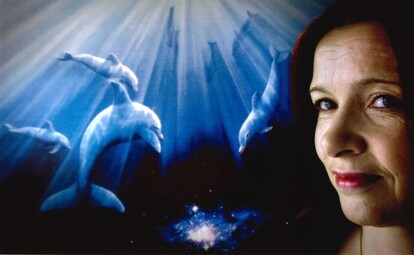
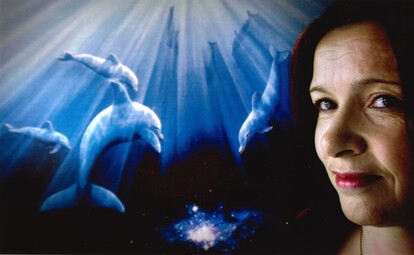
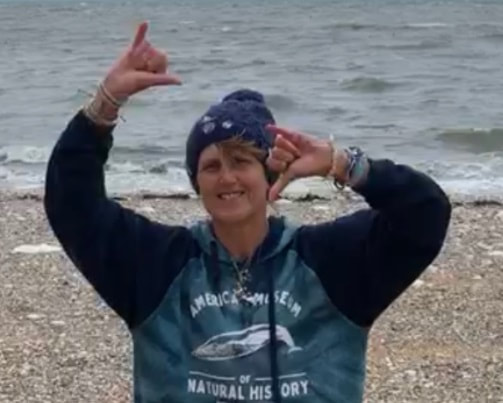

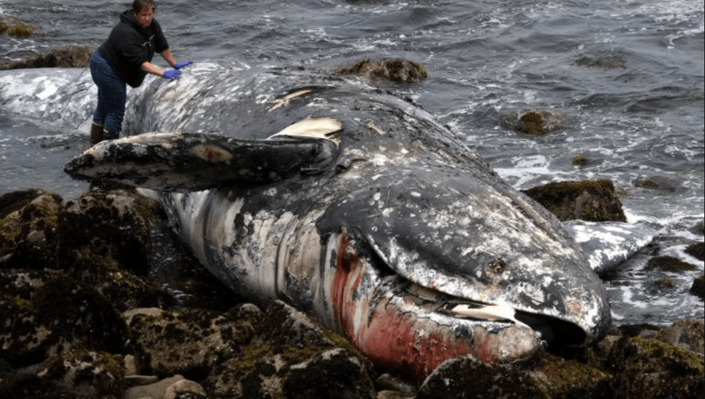
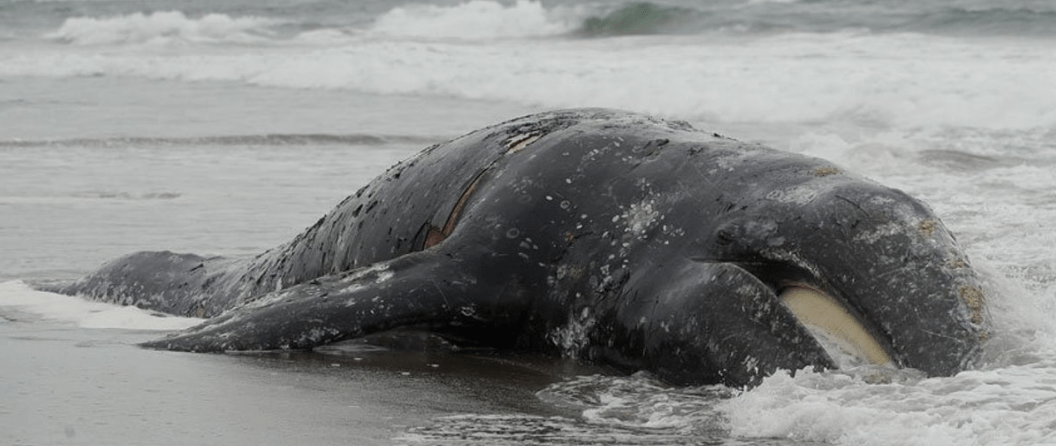
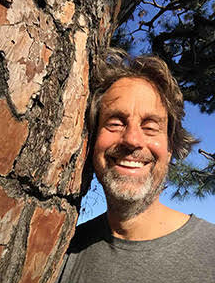
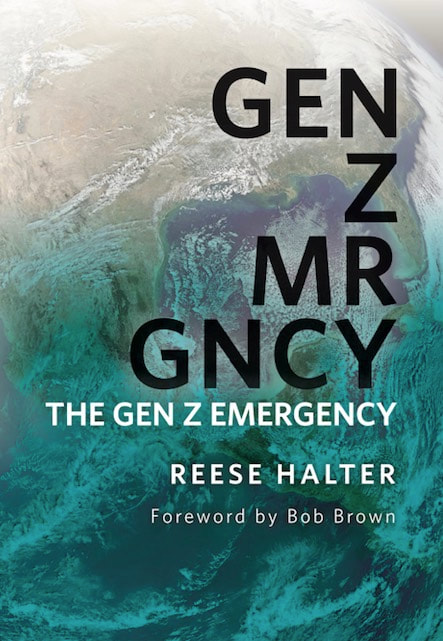
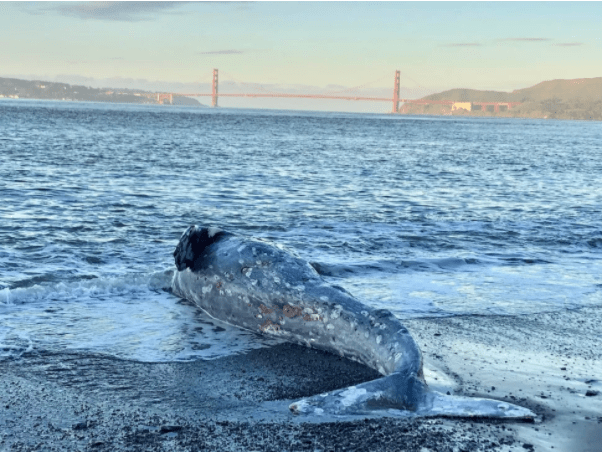
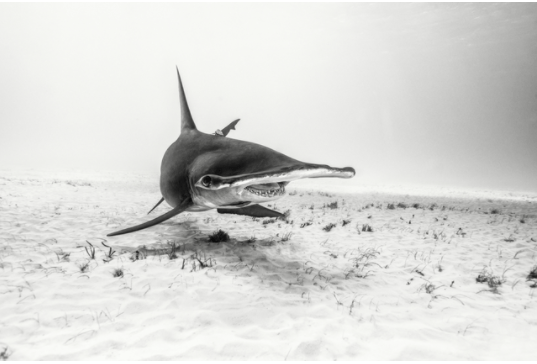
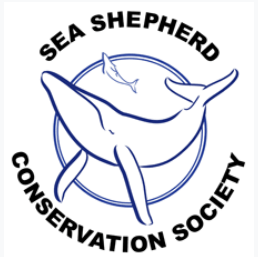
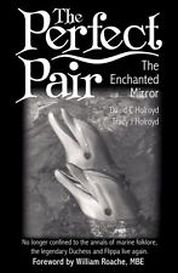
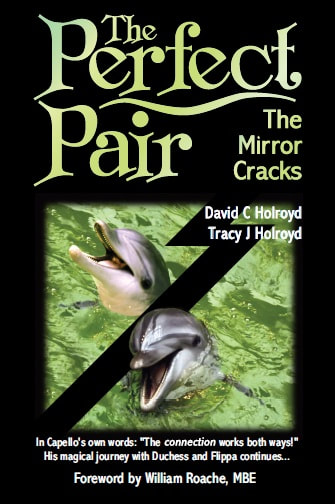
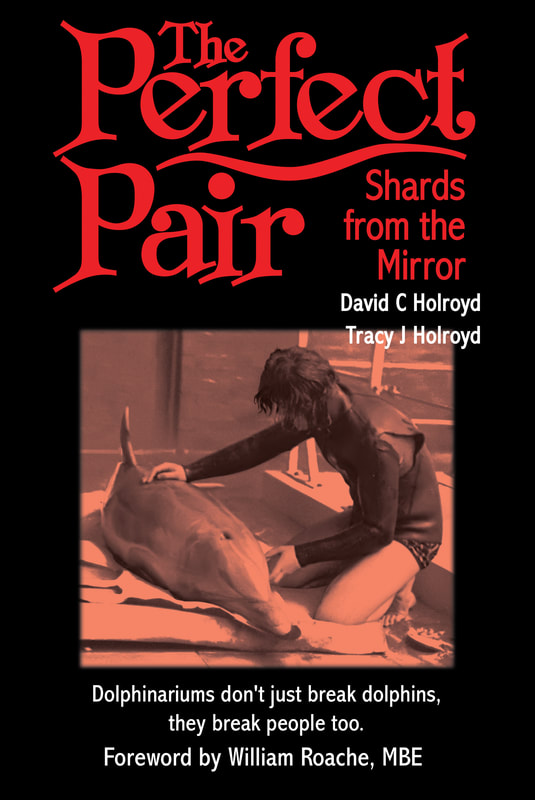
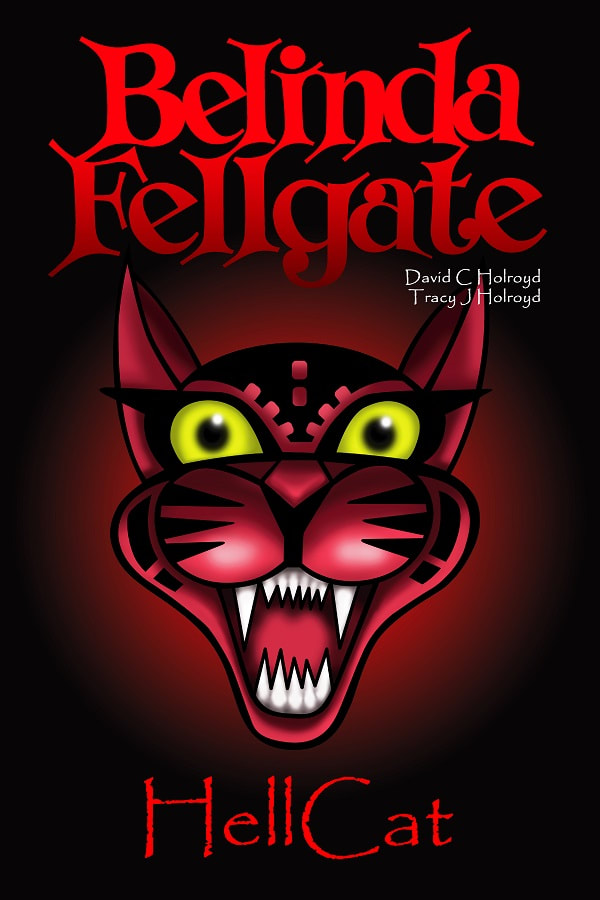
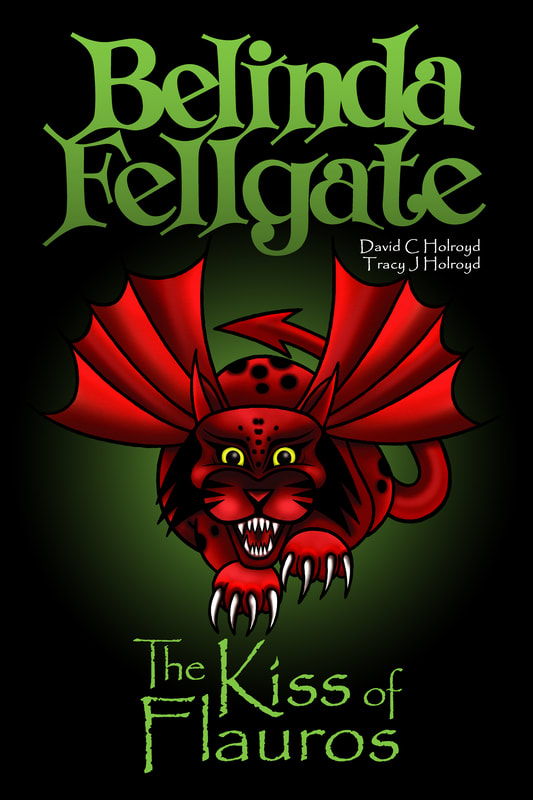


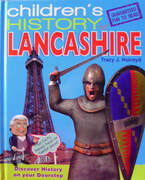
 RSS Feed
RSS Feed